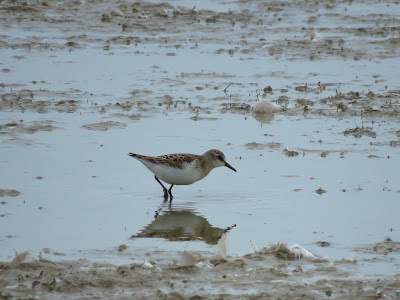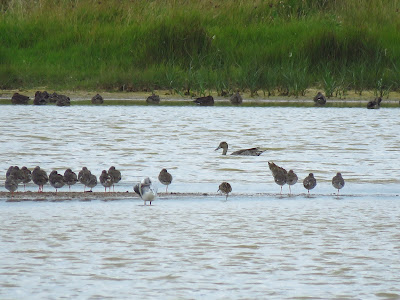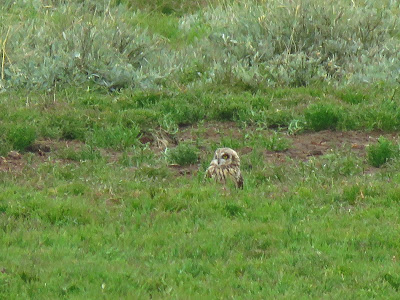Yesterday's trip felt quite short. I rarely go to Spurn lately without stopping at Kilnsea Wetlands. So I did another trip to the area today, stopping at Welwick Saltmarsh NR on the way back to check the Sea Aster bee colony.
It was a couple of hours before high tide, so I was expecting waders at the wetlands, but the diversity of waders was amazing to behold. Some of these afforded close views as they fed just in front of the hide, Little Stint and Ruff especially, but also Spotted Redshank.
Ruff.
Distant Greenshank roosting.
Ruff.
A large flock of Redshank. A Common Sandpiper walks behind.
A lone Golden Plover.
Caspian gull?
Little Stint
Little Stints.
Pintail.
Curlew Sandpiper and Ruff
Snipe.
After an hour in the Wetlands I moved to Welwick. The weather was staying quite cold (everyone in the hide was complaining about how cold it was), cloudy and breezy. I walked along, searching for banks with holes. I was starting to be doubtful if any bees would be active in this weather. Then I noticed an open sandy bank with plenty of holes by the path, and plenty of bees! Sea Aster bees are solitary bees, meaning there are no workers, just males and females. After mating, females dig their nests and lay their eggs in cells under the sand, which they provision with pollen mainly from Sea Aster. Despite the 'solitary' label, these bees form colonies, and many nests can cluster in a particular area.
One of the colonies.
The second colony nearby.
I crouched down to have a good look at the Sea Aster Bees. There was a lot of activity, with bees coming in and out of their nests.
Sea Aster bees.
One of them by two nests.
There were so few flowers about, I wondered where the bees travel to collect pollen. Would they fly as far as Kilnsea and Spurn? A single thistle flower had two bees clinging to it.

I walked a bit longer on the sea wall. I flushed two Short-eared Owls, which was a surprise. A third individual was present. They flew over the marsh, landed by some sheep and mobbed some crows. They were lovely to watch.
I turned round not wanting to disturb the owls. A Wheatear landed on the marsh, only to be chased by a Swallow. The young Swallows were being fed on the wing. As I returned I checked the bee colonies. There wasn't a single bee to be seen. I had been lucky they had been active earlier, maybe the sky turning darker had sent them inside their nests.






















No comments:
Post a Comment